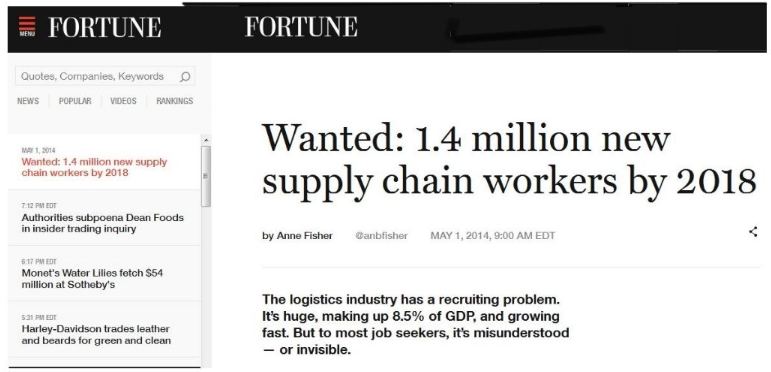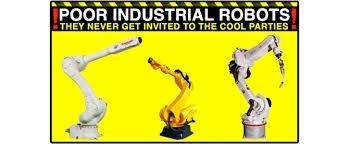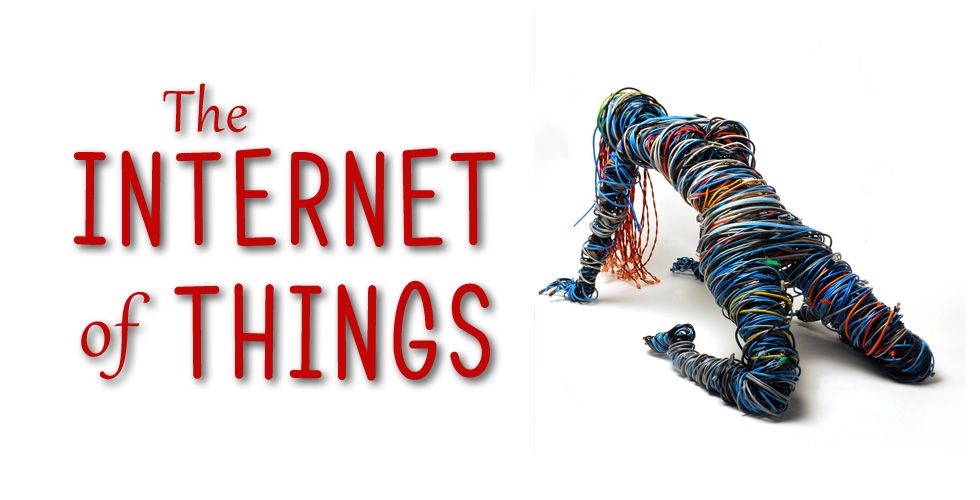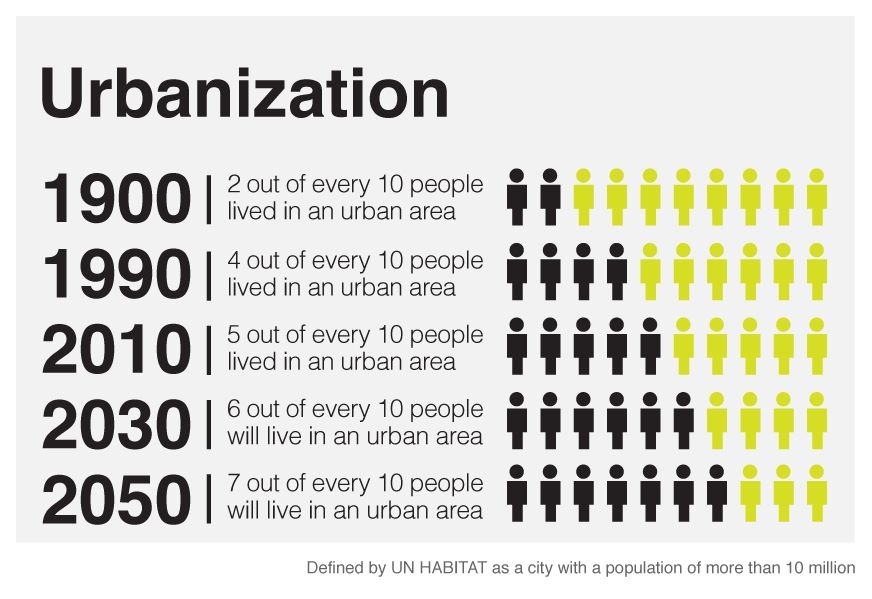A 46-Year View
Looking Back to 1984 and Forward to 2030
In January of 1984, I reentered college to earn my Industrial Management degree. This was the year in which George Orwell’s book was set, but thankfully, real life did not turn out to be so dark. The Commodore 64 was the most popular personal computer of the time, but in the shadow of the rising PC, Steve Jobs and the Mac débuted with an awesome Super Bowl ad. MTV was on the rise. Ronald Reagan was working hard to turn the economy around by employing the Laffer Curve and supply side economics. Japanese auto manufacturers were taking Detroit's Big Three to the woodshed in the marketplace.
I went back to school to study the science of managing industry. To say that American manufacturing was in good shape in the 1980s would be to indulge in fantasy. Imports from Japan and Taiwan, higher in quality and value than American products and sometimes lower in price, streamed across the Pacific at an increasing rate. The instructors at my school paid special attention to the ways of Japanese companies.
Two of these instructors (note that I say instructors, not professors) started teaching after their positions in the local Zenith television factory disappeared when the plant closed. In their final years, the company executive had these two senior managers study how Sony, NEC, and Matsushita Electric Industrial (Panasonic, Technics, Emerson, Curtis Mathis) operated. What they learned could not fix Zenith because the differences were cultural and process-oriented. So while Zenith could try to emulate the process, it did not have the culture to make the process work.
It was in those classes that I first heard the word muda, Japanese for waste. I also heard the word gemba, and learned the cultural concept of consensus management. While these words and ideas are commonplace for anybody who practices Lean or says they employ TPS (Toyota Production System), they were unknown in the vocabulary of American manufacturing. My instructors used these terms more as a novelty to spice up their lectures, rather than as core concepts. When I would go to the library to research these terms, I could not find them because there were Japanese, not American business terms, and few books even mentioned them, let alone covered the topics in any detail.
However, these two instructors did drive home the importance of looking forward into the future. They encouraged us to look at major social trends and project the ongoing direction of those trends, and to understand what those trends meant. We used a popular book, John Naisbitt's "Megatrends," as a text. The book highlighted 10 macro trends that move society, business, and government. In many ways, the content focused on how global trends affect American life. I bought the hardback book from the college's used book store for $3.50, and it still graces my bookshelf. I pull the book off that shelf a few times each year to remind myself of how Naisbitt predicted these trends would play out. Here is a the list of 10 trends:
One: Industrial Society → Information Society
Two: Forced Technology → High Tech/High Touch
Three: National Economy → World Economy
Four: Short Term → Long Term
Five: Centralization → Decentralization
Six: Institutional Help → Self-Help
Seven: Representative Democracy →Participatory Democracy
Eight: Hierarchies → Networking
Nine: North → South
Ten: Either/Or → Multiple Option
Some of those trends were no surprise to me by the end of the 1980s. By the end of the decade, computer science had transformed into Information Management Systems (IMS) and then Information Technology (IT), and trends #1 and #2 combined. We still see trend # 9, the move from North to South, happening here in the US, but the move south did not stop at the US border — first manufacturing and then agriculture moved south of the border into Central and South America. Today, any trip to the produce department in the local grocery store in the winter highlights the impact of improved transportation systems, a trend that Naisbitt did not even notice in his list of 10 trends.
While there were follow-up books to "Megatrends," I find that they do not compare favorably to the thinking first presented by Naisbitt. Even some of the discussions of trends in his own book appeared to be more warning and hectoring, or examples of wishful thinking, than real trends. One example is the chapter on trend #4 — the move from short-term thinking to long-term. If we look at the way most publicly traded corporate enterprises operate today, can we really say that they look at the long term? I can argue that quarterly returns still have huge impact on decisions. Look at the social perspective of company boards, and how quickly they dismiss competent leaders because the leader’s personal outlook on a social issue may not agree with a trendy social agenda. The choice of leadership is a long-term decision — but not for some organizations sensitive to their social image.
However different authors predict the large societal trends, there is tremendous value in observing them to predict the future.
Facing Forward to 2030 and Beyond
What are the large societal trends shaping our future? What trends should we pay attention to as Supply Chain managers and Logisticians? There is an answer to that question in the form of two different reports, the Material Handling and Logistics US Roadmap and the Material Handling and Logistics US Roadmap 2.0.
In 2013, the Material Handling Industry of America (now simply MHI) launched an ambitious project to look forward in time, taking a long-term view. MHI invited hundreds of stakeholders in the worlds of material handling and logistics to participate in workshops to talk about the future. Over 100 people from various segments of industry — end-users, suppliers, consultants, academics, government, NGOs, and the trade press — participated in four different workshops in the summer of 2013.
Sticking a flag into the sands of future time around the year 2025, these people spent over eight hours talking about future trends, the challenges these trends presented to society and business, and the capabilities needed to address these challenges. Facilitators compiled and synthesized the collective notes of these discussions into a summary of each workshop. Then MHI drew together a writing team to further condense and clarify the findings into a tight group of defined major trends. Throughout the process the writing team asked for review and feedback from the workshop participants, gaining greater clarification from comments.
Published in January 2014, the Roadmap report is a well-written, 67-page report that helps define 10 major trends and the matching capabilities needed to help meet the challenges these trends present. Many Supply Chain leaders are now starting to incorporate the Roadmap into their thinking about the future of their roles, and how they will navigate the challenges identified in the Roadmap.
As soon as MHI released the first edition of the Roadmap, change happened. Drones entered the vernacular as a potential delivery device, additive manufacturing (aka, 3D printing) appeared in manufacturing, Amazon drove e-commerce to new levels and supply chains took new forms of beatings as the global economy wondered through a strange trip of recovery. It wasn't very long before the pace of change pushed the need to update the original Roadmap report, so in 2016 Gary Forger at MHI started the process of developing a new release of the Roadmap.
The new version of the report was not a replacement, but more of an augmentation, in addition to, reflecting the changing nature of the supply chain and logistics. They would follow the same basic methology of gathering groups of people to identify developing trends. These groups included practitioners from industry and academics engaged in supply chain, as well as state, regional and federal government employees involved in logistics. They came together for one-day meetings to recognize developing trends, looking at the immediate future of today and this year, and also looking forward to the 2025 horizon.
I was one of the over 200 people who participated in the roundtable groups. The collected brain power in the groups I participated in was impressive. The ideas, trends, and concerns voiced were on point and forward looking. A short while after I attended the session, Gary Forger offered me the opportunity to contribute to the writing of the report, which I quickly accepted. In the middle of the roundtable process, Gary gathered his collection of writers into a mixture of consultants, academics and public sector experts who were truly experts in research and telling a story.
We authors started our research effort, based on the opinions and projections voiced by the roundtable groups. We quickly realized that the 2025 horizon line, which made sense for a report created in 2014, was just too close, too immediate. While many of the trends would have short term impacts, the implications of many of the trends extended beyond 2025, and as a group, we decided to set the horizon out to 2030.
You should read both reports (links below). If you are an active supply chain or logistics manager, want to become one, or are involved in any form of business, the reports provide seminal thinking about things which have a high probability of happening. While predictive but not prescriptive, the reports paint a deep image of what can happen.
We also present other articles looking forward to the changing trends, both close and far. As leaders, we must maintain a forward vision of what the evolving world is creating, what opportunities and challenges either exist or are soon to happen. The Roadmap reports and these articles are a good place to start your thinking journey.
Articles in This Series

Articles in This Series

Challenged by Urbanization
By 2020, more than half of the world’s human population will live in cities. Read More

Mass Personalization
While our high school history texts may teach us that mass production is a result of the introduction of mass produced interchangeable parts at the dawn of the Industrial Age, mass production existed as early as the Chinese pre-Han and Han dynasties. Read More

Mobile & Wearable Computing
Millions of mobile computers are working at this moment. Some are looking up the weather, some are playing games, some are displaying the news, some are showing videos, and some are just functioning as phones. Read More

The Changing Workforce
If you haven’t heard by now, the workforce is changing. The baby boomers are retiring and the Millennials don’t want to work in warehouses. Read More

Sustainability
Sustainability is a trend that continues to stir up a variety of reactions. Some believe it is a fad. Others are steadfast supporters. Read More

The Growth of E-Commerce Part 1
Recently, we started this series exploring the Ten Key Trends in Logistics and the MHI Material Handling and Logistics U.S. Roadmap. Read More

Robotics & Automation
Industrial robotics and automation are growing at breakneck speed. Well, that's what the reports say. Funny thing is, if you go back 10 years and read analysts’ reports about robotics and automation, those reports will also say that robotics and automation are growing at breakneck speed. Read More

Sensors & The Internet of Things
We created a series about the Key Ten Trends identified in the Material Handling and Logistics US Roadmap report published by MHI in January 2014. Read More

The Changing Resource of Labor Resources, Not Assets
Whenever a client refers to their employees as assets, I am quick to admonish them for their poor choice of words. Sometimes I can be harsh. Read More

The Growth of E-Commerce Part 2
In the previous article, we started our discussion about the Material Handling and Logistics U.S. Roadmap trend on the growth of E-Commerce. Read More

Relentless Competition
In 2014, we developed a series covering the Key Ten Trends identified in the Material Handling and Logistics U.S. Roadmap report published by MHI in January of that year. Read More

Urbanization
If you graduated from a US high school in the 1970s, the odds are high that you attended a suburban high school. By the end of the 1970s, the migration of populations out of the cities into the suburbs had reached its peak. Read More

The Changing Resource of Labor Union Slavemasters
Market forces do play in the world of labor, forcing change in the way entities in the market operate. Read More

Does Transportation Influence Online Shoppers' Purchasing Decisions?
A recent headline on an internet business news site caught my eye: “Survey – Online Shoppers Not Enticed by Same Day Delivery.” Read More


